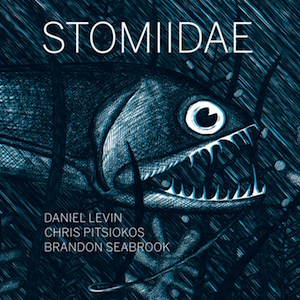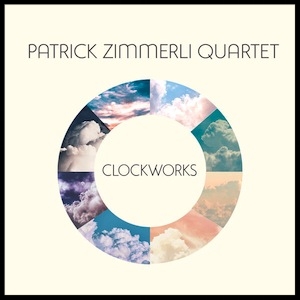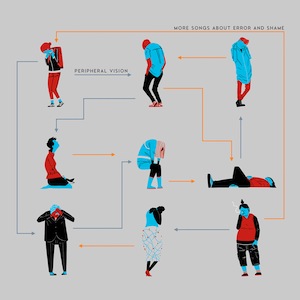Label: Origin Records, 2018
Personnel – Andrew Rathbun: composer, conductor // Reeds: John O’Gallagher, Ben Kono, Quinsin Nachoff, Dan Pratt, Carl Maraghi // Trumpet and Flugelhorn: Tim Hagans (flugelhorn soloist), Seneca Black, Matt Holman, Dave Smith, Russ Johnson // Trombone: Alan Ferber, Mike Fahie, JC Stanford, Chris Olness // Vocals: Luciana Souza, Aubrey Johnson // Nate Radley: guitar; Jeremy Siskind: piano, rhodes; David Ambrosio: bass; Bill Stewart: drums; Owen Howard: drums.
The new album from Canadian saxophonist Andrew Rathbun comprises three suites. The 2-CD set Atwood Suites, co-produced by Rathbun and drummer George Schuller, features a contagious 18-piece jazz orchestra of respectful instrumentalists and renowned soloists, including saxophonists Quintin Nachoff and John O’Gallagher, trumpeters Tim Hagans (as a featured soloist on CD1) and Russ Johnson, trombonist Alan Ferber, guitarist Nate Radley, and keyboardist Jeremy Siskind, among others. As builders of the bottom foundation layer, we have David Ambrosio and Bill Stewart on bass and drums, respectively, while the verbal storytelling belongs to vocalist Luciana Souza on the first disc, while Aubrey Johnson sings wordless phrases on the second one, vocalizing more like an instrument.
The two suites on disc one, Two Islands and Power Politics have three movements each and are evocative of Margaret Atwood’s poetry. Following the relaxed chamber opening, the warming voice of Ms. Souza gets the spotlight on “Two Islands I”, initially having the piano as sole accompaniment. Ensuing Hagans’ fluent solo and a captivating orchestral passage, Ambrosio and Stewart invest in a cozy groove characterized by a smooth funky feel and adorned by Radley’s alluring stretches.
Hagans also stands out on the balladic, non-vocalized second movement, where he leads all the way through with a conciliatory attitude, and also on the suite’s last section, whose waltzing cadence is announced by a drums solo upfront. In addition to the trumpeter’s catchy phrases, which can evolve from innuendo to exaltation, Nachoff also brings in a vibrant swinging feel as he expands his tenor possibilities. Radley searches for resplendent harmonies while comping behind the soloist.
The Power Politics suite was previously played by Kenny Wheeler at Birdland but never recorded. The second movement incorporates a beautiful solo piano moment in its earliest stage, whereas the third enters directly rubato with Souza’s voice over the piano. Unisons are established with the horn section, from which O’Gallagher stands out as he makes his saxophone talk with unbridled enthusiasm. Hagans spreads his multi-pitched facility before a bass divagation leads to the final theme statement.
The disc 2 opens with the majestic “Fractured”, which follows a post-bop lineage with a groovy foundation. Horn unisons and guitar ostinatos operate in counterpoint before the arrival of phenomenal improvisations by Radley, Siskin, and Russ Johnson.
The final movements “V”, “I”, “II” are distinct and distinguished. The first of the three gives rise to an elegant if yearning chamber mood, advancing at an unhurried 4/4 with Radley decorating on top of the harmonies; the middle one has a simple phrase as inspiration and features trumpeter Matt Holman as soloist; and the last one, running at a medium tempo with a shifting additive 6+7 metered groove, showcases a spotless trombone solo by Ferber.
As a zealous conductor, Rathbun extracts the most from the cast to fulfill the arrangements. Even giving his tenor a rest, his individual stamp is noticeable through a compositional taste that portents many thrilling successes to come.
Grade A-
Favorite Tracks:
06 (CD1) - Power Politics III ► 01 (CD2) - Fractured ► 04 (CD2) - II








































